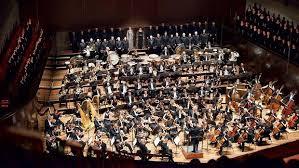You are here
Mahler's Masterpiece
Symphony No. 2 in C Minor, “Resurrection,” by Gustav Mahler is as big as its name. The massive work, which the Evanston Symphony Orchestra will play in its last concert of the season on June 11, is grand in all directions: scope, intensity and length.
Specifically, the five-movement, 85-90-minute symphony, which premiered in 1895, calls for “the largest orchestra ever specifically demanded by any composer to date,” said musicologist Richard Taruskin. This means at least four each of the woodwind family, 10 each of horns and trumpets, four trombones plus tuba, seven timpani played by two (or three) players, a large percussion section that includes bells and tam-tams, an organ and as many string players as possible. There is also an off-stage band during the finale.
The symphony, which carries Christian themes, among them death, resurrection and the Day of Judgment, evokes a depth of emotion that resembles Beethoven’s sweeping Fifth Symphony. (Interestingly enough, the key of C Minor is also the key of Beethoven’s Fifth.) The opening movement of Mahler’s symphony, a funeral march, ends with a coda so dark the composer calls for a pause of at least five minutes, possibly more, before continuation of the performance. (The ESO will pause and then take an intermission here instead.) Meanwhile, the use of a chorus and vocal soloists in the final movement are reminiscent of the last movement (“Ode to Joy”) of Beethoven’s Ninth Symphony.

Melbourne Symphony